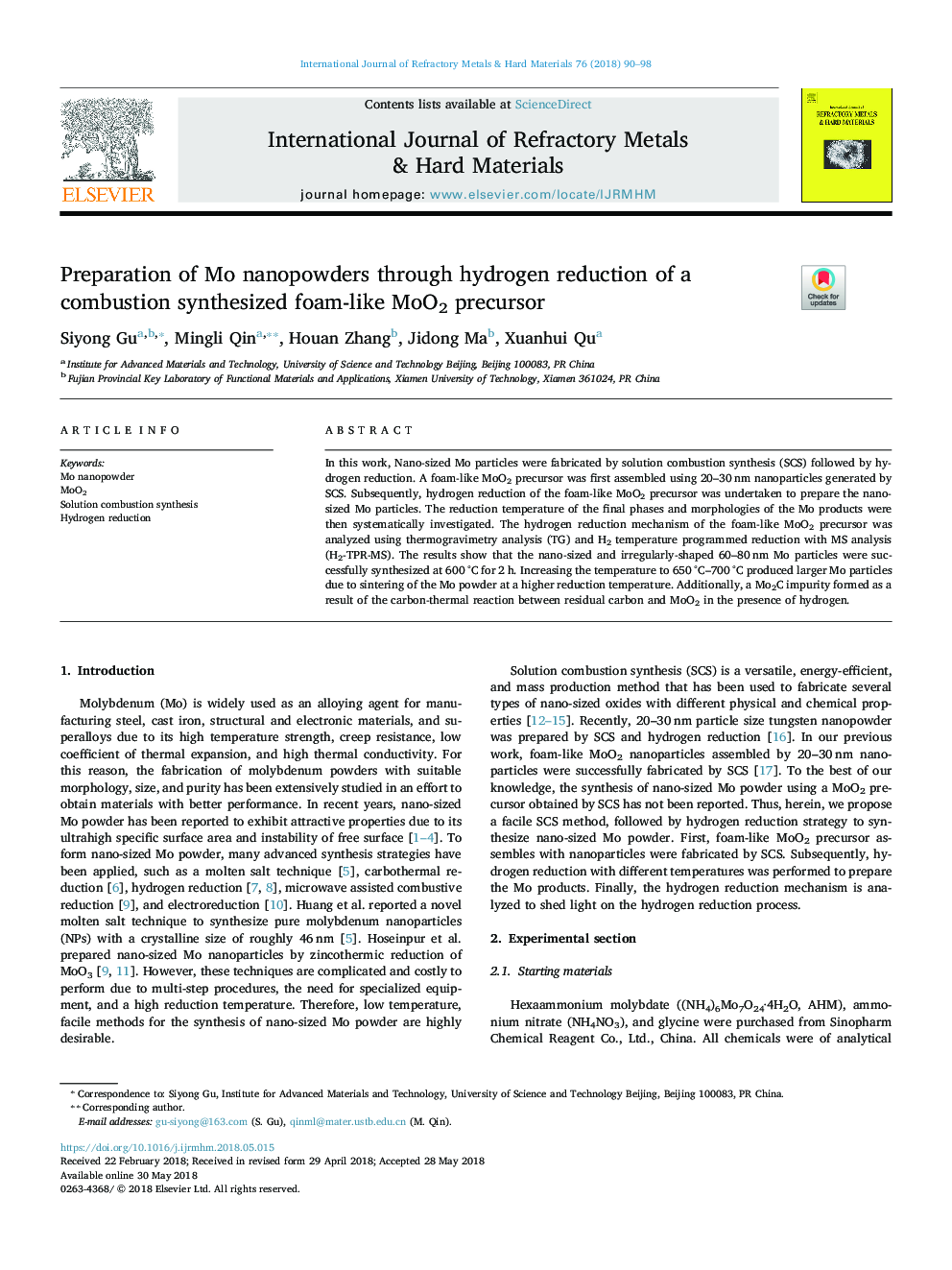| Article ID | Journal | Published Year | Pages | File Type |
|---|---|---|---|---|
| 7989488 | International Journal of Refractory Metals and Hard Materials | 2018 | 9 Pages |
Abstract
In this work, Nano-sized Mo particles were fabricated by solution combustion synthesis (SCS) followed by hydrogen reduction. A foam-like MoO2 precursor was first assembled using 20-30â¯nm nanoparticles generated by SCS. Subsequently, hydrogen reduction of the foam-like MoO2 precursor was undertaken to prepare the nano-sized Mo particles. The reduction temperature of the final phases and morphologies of the Mo products were then systematically investigated. The hydrogen reduction mechanism of the foam-like MoO2 precursor was analyzed using thermogravimetry analysis (TG) and H2 temperature programmed reduction with MS analysis (H2-TPR-MS). The results show that the nano-sized and irregularly-shaped 60-80â¯nm Mo particles were successfully synthesized at 600â¯Â°C for 2â¯h. Increasing the temperature to 650â¯Â°C-700â¯Â°C produced larger Mo particles due to sintering of the Mo powder at a higher reduction temperature. Additionally, a Mo2C impurity formed as a result of the carbon-thermal reaction between residual carbon and MoO2 in the presence of hydrogen.
Related Topics
Physical Sciences and Engineering
Materials Science
Metals and Alloys
Authors
Siyong Gu, Mingli Qin, Houan Zhang, Jidong Ma, Xuanhui Qu,
